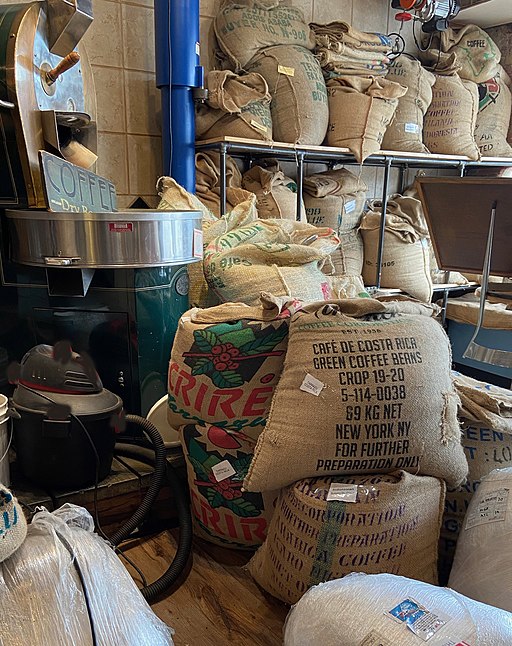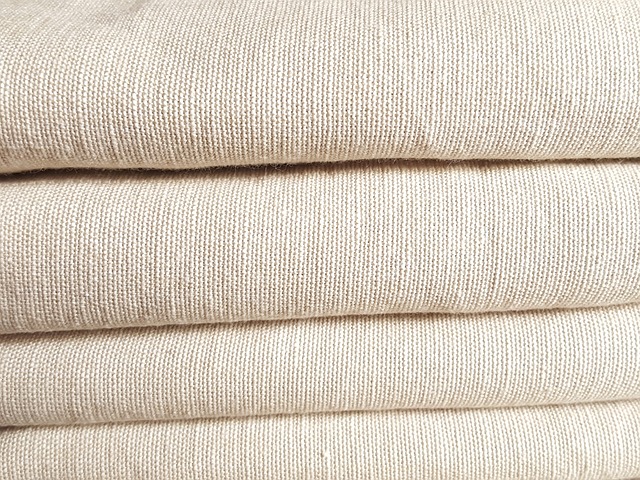Burlap is coarse, woven from jute or sisal fibers, while linen is finer, made from flax fibers, and known for its smooth texture.
TL;DR Burlap Vs. Linen
Burlap, derived from the jute plant or other natural fibers like sisal or hemp, is known for its coarse texture and rustic charm. It is primarily used in landscaping and agricultural applications due to its durability and ability to withstand outdoor conditions. Burlap sacks are commonly utilized for storing produce or as sandbags during flood prevention efforts. Additionally, burlap has gained popularity in crafts and home decor projects for its organic appeal.
Linen comes from the flax plant and boasts a smooth yet sturdy texture that offers exceptional breathability. This fabric has been cherished for centuries for its luxurious feel and remarkable absorbency properties. Linen finds extensive use in creating clothing items such as shirts, dresses, pants, bedding materials like sheets and pillowcases due to its ability to keep the body cool during warm weather.
What is Burlap?

Burlap, also known as hessian or jute, is a coarse and loosely woven fabric made from the fibers of the jute plant. It has a distinct rustic charm that adds character to any project or décor. The texture of burlap is rough and slightly scratchy to the touch, giving it a charmingly “earthy” feel.
This versatile fabric has its roots in agriculture and construction industries due to its durability and affordability. Originally used for sacks and bags, burlap has found its way into various other applications over time. Its strength makes it ideal for landscaping projects such as erosion control, plant protection, and tree wrapping.
In recent years, burlap’s rustic appeal has made it highly popular in DIY crafts and home décor. From table runners to wall hangings, this textured fabric brings a touch of natural elegance to any space. Burlap is also commonly used in event decorations like wedding themes with a rustic vibe.
Despite its coarse nature, burlap can be transformed into softer linens with proper washing techniques without losing its unique aesthetic qualities. So whether you’re looking for an eco-friendly material for your garden or want to add some farmhouse flair to your home decor projects, burlap might just be the perfect choice!
What is Linen?

Linen is a versatile and timeless fabric that has been cherished for centuries. It is made from the fibers of the flax plant, which give it a natural and earthy feel. Linen has a distinctive texture that sets it apart from other fabrics.
One of the key characteristics of linen is its breathability. This makes it an excellent choice for clothing in warm weather, as it allows air to flow freely and keeps you cool and comfortable. Linen also absorbs moisture without feeling wet or heavy, making it ideal for towels and bed sheets.
Another advantage of linen is its durability. The fibers are strong and resistant to wear, allowing linen products to withstand frequent use and washing without losing their quality or shape. In fact, linen often becomes softer and more supple with time.
Linen’s versatility extends beyond clothing and household items. It can be used in upholstery, curtains, tablecloths, napkins, and even wall coverings. Its natural elegance adds a touch of sophistication to any space.
Linen embodies simplicity combined with luxury – a combination that never goes out of style. Whether you’re looking for comfort in clothing or adding an elegant touch to your home décor, linen offers exceptional qualities that make it stand out among other fabrics
Burlap Vs. Linen – Key differences
| Characteristic | Burlap | Linen |
|---|---|---|
| Fiber Source | Jute or Sisal | Flax |
| Texture | Coarse and rough | Smooth and fine |
| Strength | Less durable, prone to fraying | Strong and durable |
| Appearance | Rustic and natural | Elegant and refined |
| Color Options | Typically tan or brown | Various colors, often white or beige |
| Common Uses | Sacks, gardening, rustic decor | Clothing, tablecloths, bedding |
| Breathability | Very breathable | Highly breathable |
| Absorbency | Absorbs moisture well | Excellent moisture absorption |
| Wrinkling | Prone to wrinkling | Wrinkles less easily |
| Cost | Generally inexpensive | Often more expensive |
Uses and Benefits of Burlap
- Sack and Bag Material: Burlap is commonly used for making sacks and bags due to its strength and durability. It can hold and transport heavy items like grains, potatoes, and other produce.
- Gardening: Burlap can be used in gardening as a weed barrier, to protect plants from frost, or to wrap the roots of newly planted trees or shrubs during transplantation.
- Erosion Control: Burlap can be used to prevent soil erosion on slopes or in areas where vegetation has been removed.
- Decor and Crafts: Burlap’s rustic and natural appearance makes it popular for DIY crafts, home decor, and rustic-themed events like weddings. It can be used for table runners, banners, wreaths, and more.
- Wrapping and Packaging: It is often used for eco-friendly and rustic gift wrapping and packaging.
Uses and Benefits of Linen
Uses
- Clothing: Linen is popular for making clothing, including shirts, pants, dresses, and suits. It is especially favored for warm-weather attire due to its breathability and moisture-wicking properties.
- Bedding: Linen sheets, pillowcases, and duvet covers are appreciated for their softness, temperature regulation, and moisture absorption, providing a comfortable night’s sleep.
- Table Linens: Linen tablecloths, napkins, and placemats are used for their elegant appearance and ability to withstand frequent washing.
- Towels: Linen towels are highly absorbent and quick-drying, making them suitable for bath and kitchen use.
- Home Decor: Linen is used in home decor items such as curtains, drapes, upholstery, and decorative pillows, adding a touch of natural elegance to interior spaces.
- Breathability: Linen is highly breathable and allows for excellent airflow, making it ideal for hot and humid climates.
- Moisture-Wicking: Linen can absorb and release moisture quickly, keeping the body dry and comfortable.
- Durability: Linen is known for its strength and longevity, often outlasting other fabrics.
- Hypoallergenic: Linen is naturally hypoallergenic and resistant to dust mites and bacteria, making it a good choice for those with allergies or sensitive skin.
- Environmental Friendliness: Flax, the plant from which linen is derived, requires less water and fewer pesticides than some other crops, making linen a more sustainable choice.
Image Credits
Featured Image By – Downtowngal, CC BY-SA 4.0 , via Wikimedia Commons
Image 1 By – Nolabob, CC BY-SA 4.0 , via Wikimedia Commons
Image 2 By – Melissa Manning from Pixabay







